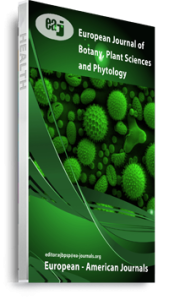The assessment of floristic composition of every ecosystem is very important in ecological planning and productivity. The main objective of this study was to determine the species composition, structure and diversity in two community forests between the Deng Deng National Park and the Belabo Council Forest. The transect method was employed in data collection. Four long transects were established parallel to each other in each community forest at a distance of 2km apart. In each transect, plots of 20x500m were established at interval of 500m. A total of 25 plots 20x500m (1ha each) were established in the two community forests; 13 plots in community forest one (KEBO) and 12 plots in community forest two (KEPOL). This gave a total of 0.25% of the total land surface sampled in both community forests. Within each plot, all individual trees≥10cm were identified, measured, and recorded. A subplot of 10x10m was established in each plot to identify trees of <.10cm. The identification of plants was done using a combination of characters such as the general form of the tree (butresses, roots systems, bark texture; slash colour, smell, leaf type and shape) as well as the flowers, and fruits of the trees. The dbh of all trees were measured at 1.3 using the dbh metal tape. The height of trees was measured through estimation (average estimates of all field researchers). Results revealed a total of seven thousand eight hundred and seventeen (7817) individual plants with dbh ≥10cm in the entire study area. From this number, 4108 tree stems ≥10cm were identified and measured in community forest (KEBO) one. This belongs to 156 species in 41 families. In community forest two (KEPOL), a total of and 3708 stems were identified and measured. This belongs to 149 species in 41 families. Fabaceae ,Malvaceae , Euphorbiaceae and Rubiaceae were found to be the most dominant plant families while Drypetes sp, Annonidium manii and Funtumia africana were found to be the most dominant plant species. Species composition and diversity varied in the two community forests. Community forest one was characterized by high diversity and similar species composition shown by the Shannon diversity index of 3.6 while community forest two showed signs of poor diversity as seen from the index of 3.41. Tree basal area was high in KEPOL than KEPOL. Species in the different plots were similar but with outliers of plot 4 in KEBO and plot 12 in KEPOL had species which were far more different from the rest of the plots.
Keywords: : basal area, Composition, Diversity, Structure, floristic

